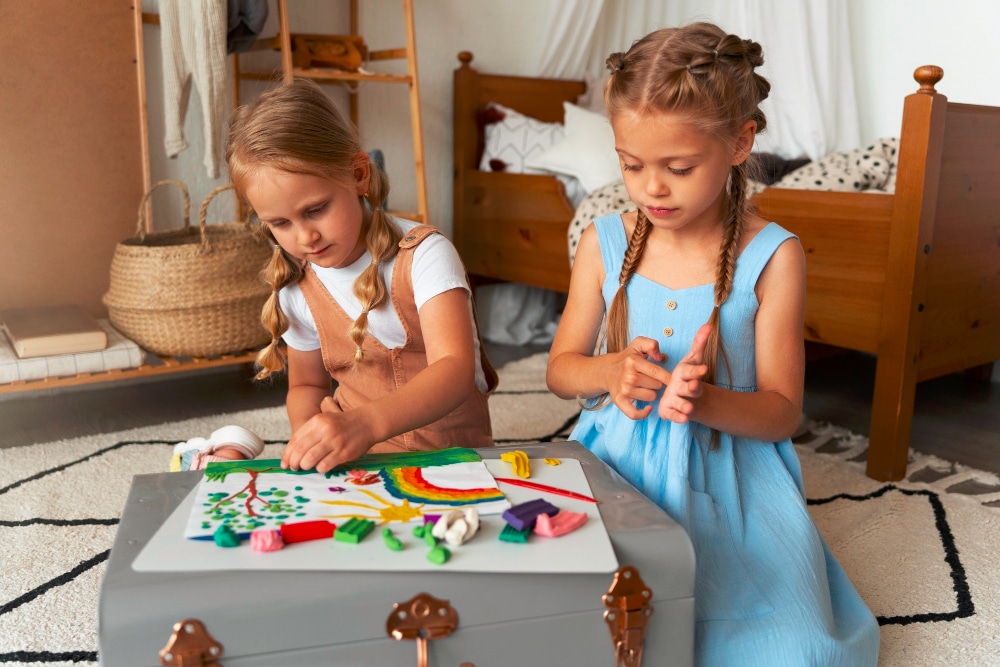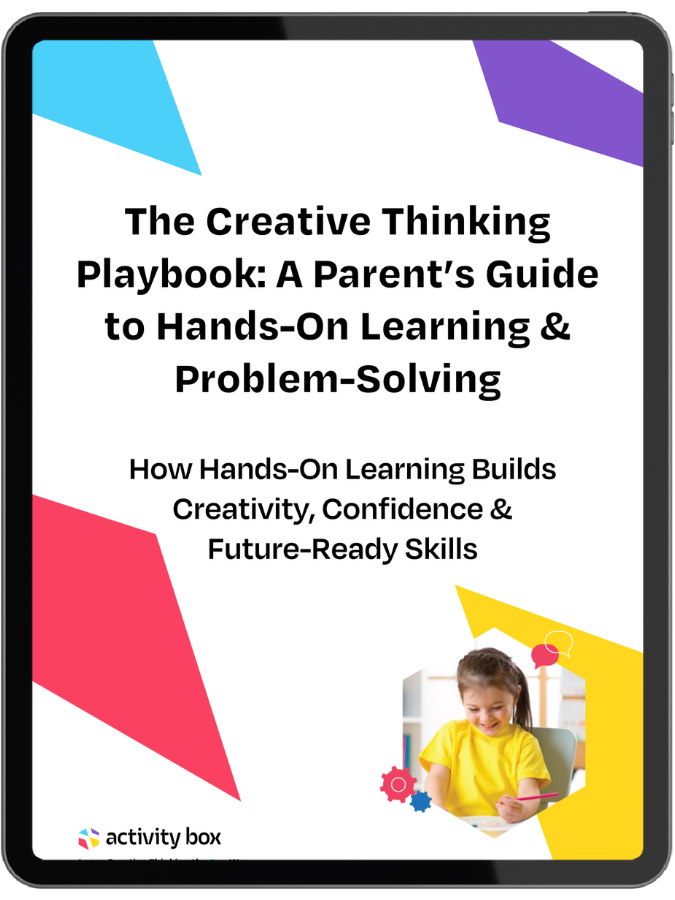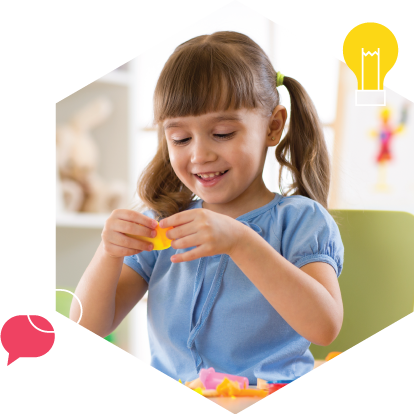
Boost Creativity in Early Childhood Development: 5 Key Benefits of Play-Based Learning
Key Takeaways
| Aspect | Summary |
| Why This Topic Matters | Creativity strengthens problem-solving and emotional intelligence. |
| Cognitive Benefits | Boosts brain flexibility and memory. |
| Problem-Solving Benefits | Enhances adaptability and innovation skills. |
| Emotional Development | Encourages self-expression and empathy. |
| Practical Applications | Parents and educators can use hands-on learning to nurture creativity. |
Why Creativity Matters in Early Childhood Development
Did you know that play-based learning directly boosts brain growth in young children? Research suggests that creative activities enhance cognitive flexibility, problem-solving skills, and emotional intelligence, which are crucial for early childhood learning.
According to the Harvard Center on the Developing Child, play strengthens brain architecture and supports children’s ability to learn and adapt. (Source)
This article explores five key benefits of fostering creativity in early childhood development and provides actionable insights for parents and educators.
👉 Want hands-on, screen-free activities that encourage creativity in kids? Explore ActivityBox’s learning kits today!
The Science Behind Creativity in Early Childhood Development
What Does Creativity Look Like in Young Children?
Creativity in early childhood appears in various ways, including imaginative play, problem-solving, and hands-on activities. When children engage in open-ended play, they develop self-expression, curiosity, and creative thinking skills.
Signs of Creativity in Young Learners
- Expressing unique ideas through play and art.
- Using household objects in imaginative ways (e.g., turning a box into a spaceship).
- Experimenting with different solutions to simple problems
- Making up stories, characters, or scenarios
- Engaging in pretend play with peers
📖 Related Read: What is Creativity in Early Childhood?
How Creativity Shapes Brain Development
Scientific studies show that creative play strengthens neural connections in young minds. According to the National Association for the Education of Young Children (NAEYC), hands-on activities like crafting and imaginative play:
- Enhance problem-solving abilities
- Develop executive function skills
- Improve memory and cognitive flexibility (Source)
| Creative Activity | Brain Function Developed |
| Storytelling | Language development & sequencing skills |
| Drawing & Painting | Visual processing & hand-eye coordination |
| Building with Blocks | Spatial awareness & motor skills |
| Pretend Play | Emotional regulation & empathy |
Children who engage in play-based learning demonstrate higher cognitive growth and stronger memory retention.
📖 Explore More: Cognitive Benefits of Creative Play
The Link Between Creativity and Problem-Solving
Why Creative Thinking Enhances Problem-Solving
Creative thinking helps kids develop problem-solving skills by encouraging cognitive flexibility. When children engage in hands-on learning activities, they test different solutions and improve decision-making skills.
🔍 Example:
A child trying to build a tall tower with blocks will experiment with different stacking techniques, learning through trial and error. This process strengthens real-world problem-solving abilities.
📖 Related Read: Creativity and Problem-Solving in Early Learning
Creativity and Emotional Intelligence
How Creativity Builds Self-Expression and Empathy
Creative activities allow children to express emotions, communicate ideas, and develop empathy. Pretend play, storytelling, and role-playing all support social-emotional learning in young kids.
🔍 Research Insight:
According to the American Academy of Pediatrics, play-based learning enhances emotional regulation and resilience, making it essential for child development. (Source)
Creative Activities That Support Emotional Growth
- Role-Playing Games – Encourages empathy by taking on different perspectives.
- Drawing Feelings – Helps process emotions in a safe way.
- Collaborative Art Projects – Builds teamwork and communication skills.
📖 Related Read: How Creative Play Enhances Emotional Intelligence
Want even more brain-boosting activities?
Discover easy, screen-free ways to help your child grow creativity and confidence at home.
How Parents and Educators Can Foster Creativity
Hands-On Learning at Home
Simple, open-ended activities encourage creativity without requiring expensive materials.
Easy Creative Activities for Kids
- Story Starters: Give your child a sentence or picture and let them create a story.
- Loose Parts Play: Use everyday items (bottle caps, string, cardboard) for open-ended play.
- DIY Art & Crafts: Let children experiment with different textures, colors, and materials.
📖 Explore More: ActivityBox 6-Month Creative Thinking Program
Classroom Strategies for Educators
Teachers can integrate creative thinking strategies into structured learning environments.
- Provide choice-based activities to allow self-expression.
- Encourage collaborative projects that require teamwork and problem-solving.
- Use storytelling and role-play to reinforce concepts.
📖 Related Read: The Role of Imaginative Play in Cognitive Growth
Key Takeaways and Next Steps
- Creativity in early childhood development fosters problem-solving, emotional intelligence, and cognitive flexibility.
- Play-based learning supports self-expression and social-emotional growth.
- Parents and educators can encourage creativity through hands-on activities and role-play.
🚀 Unlock your child’s creative potential today with ActivityBox’s monthly learning kits!
FAQs About Early Childhood Development
Q: How can I encourage screen-free learning at home?
A: Introduce hands-on activities like crafting, STEM experiments, and storytelling. ActivityBox provides curated activity kits for structured play.
Q: What are the benefits of creative play for kids?
A: Creative play enhances problem-solving skills, cognitive flexibility, and emotional intelligence, making kids more adaptable learners.
Q: How does pretend play help cognitive development?
A: Pretend play strengthens memory, sequencing skills, and social interactions, improving communication and critical thinking.
Still have more questions?
We’re here to help! Contact us →

Get the Free Creative Thinking Playbook
Learn how hands-on play helps your child develop problem-solving, creativity, and confidence, without screen time or prep.
Hands-on, screen-free activities
Printable planner included
Stress-free and fun for parents
Expert-designed, child-approved
